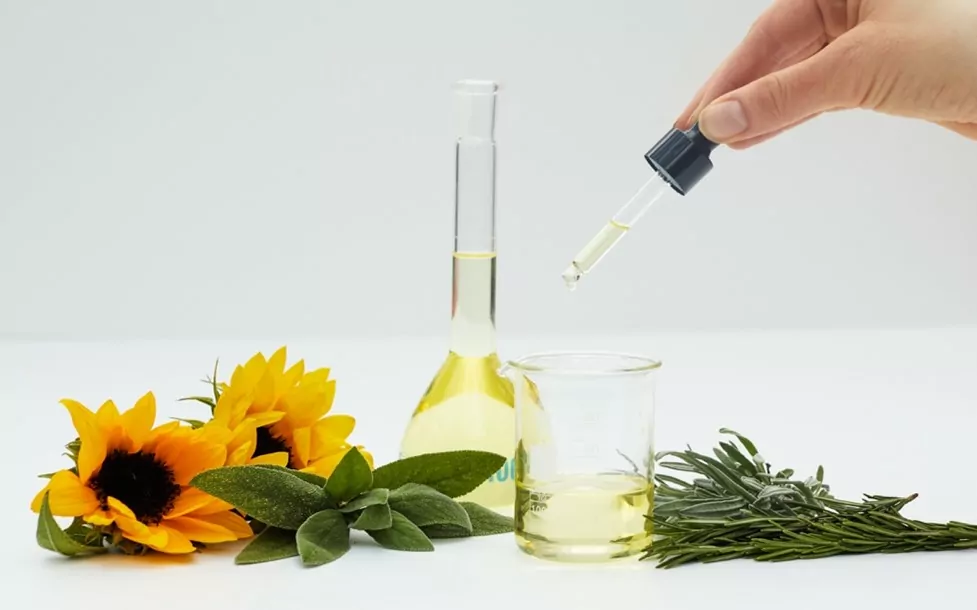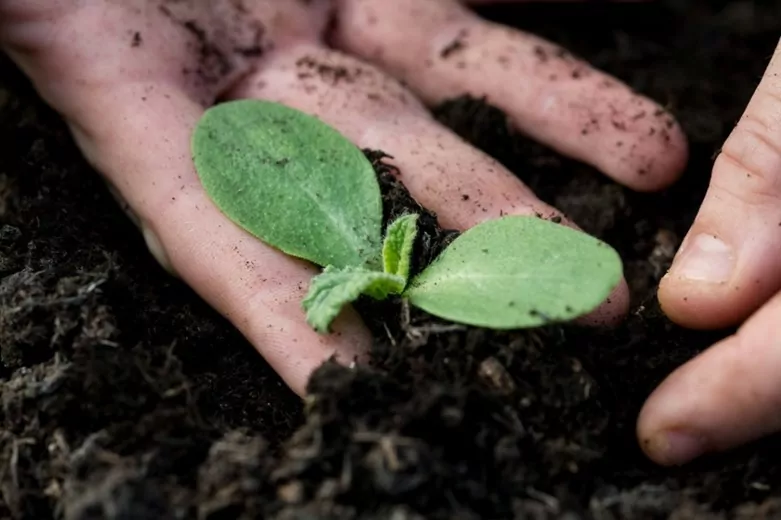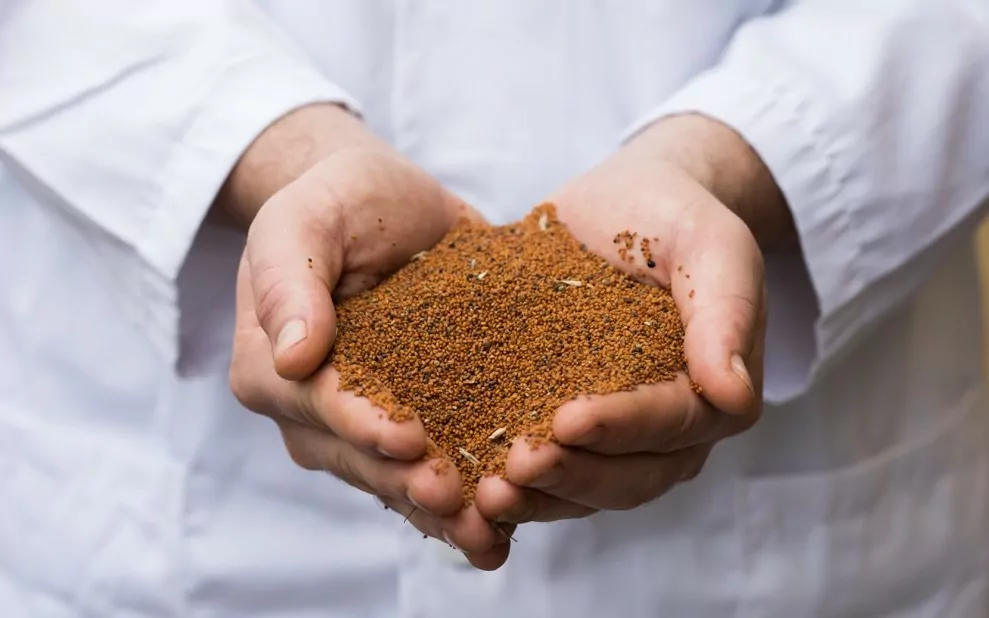
Over the past year of lockdown measures in the UK, people have turned to plants more than ever to bring a little bit of the outside world into their own home spaces. Adopting houseplants brightened up not only our bedrooms but our routines, and three million people took up gardening to make the most of time and space outdoors. After over a year of tending, pruning, potting and watering, our comfort with, and affection for, plant life has undoubtedly increased. And just as we’ve learned to care for plants, we’ve learned they can care for us too.
From the centrality of fruit and vegetables to a healthy diet, to the mood benefits of spending time among nature, plants play a core role in the lifestyle of a healthy individual. In this article, we investigate the science of how plants and the substances found within, how they are used in the medicines that can do so much for us.

Whether it’s an oxygen hit or a sweet smell, being in the vicinity of plants gives us a general boost of wellbeing. But plant species have also been used to target specific health concerns in medicine for millennia. From ancient remedies and religious rites through to traditional Chinese medicine, the holistic Ayurvedic treatment practices of India, and even the organic blueprints for synthetic pharmaceuticals today, plants take up a massive space in our medical landscape.
Many drugs that are household names have their roots in botanical specimens. The basis of codeine is commonly known to be in the opium poppy or Papaver somniferum. Digitalis, derived from the foxgloves that embellish British hedgerows in summer, can be used to regulate the heartrate and treat arrhythmia. And there is not just one, but over 1200 plants which can be used to treat malaria. This is not to mention ‘soft’ remedies, like the use of dried lavender as a sleep aid, or rose as an aphrodisiac. In 2000 alone, over 17 billion dollars were spent in the USA on traditional herbal medicines, and over the last two decades, the natural health industry has grown even more.
Indeed, as the 21st-century wellbeing landscape makes increasing use of the organic world, the technology used to process plant matter has evolved, too. In the past, the use of plants for medicine was largely based on burning them in dried form, or crushing or boiling the entire petal, stem, or root of the plant that was believed to contain the beneficial substances for use in either topical or oral remedies. These processes gradually became more complex and specific, moving to steam distillation, pioneered by the 11th-century Persian scientist Avicenna, through which the essential oil of the plant could be extracted. This essence of the whole plant, flower or root has been used alone or as an ingredient in other natural health remedies for centuries.
Research on essential oils and their many therapeutic uses has been greatly enhanced by the development of new extraction technologies. One of the latest developments is supercritical CO2 extraction, a process which enables the isolation of specific molecules within plants that are linked to health benefits for humans. These active molecules can be extracted from the plants and then used to create advanced formulations, increasing the effectiveness of plant properties to a degree that could not have been hoped for in the past. This is wellbeing at a molecular level.

One highly popular and innovative target for supercritical CO2 extraction are terpenes. There are over 30,000 naturally occurring varieties of these superstar substances. Terpenes are aromatic compounds that are abundantly present in plants and are composed of hydrogen and carbon atoms. When inhaled, terpenes can interact positively with specialised receptor cells in the human body, affecting the nervous, endocrine and even the immune system. Terpenes have become a research focus with the aim of exploring how they might be manipulated to provide specific health benefits to humans.
Terpenes are volatile compounds and can therefore be easily absorbed through inhalation. When terpenes are inhaled, they interact with hundreds of different olfactory receptor proteins that are found on sensory neurons (nerve cells) inside the human nose. These receptors are tailored to communicate with many different substances in the environment. Terpenes achieve their calming and healing effects via these receptors, which are linked via neurotransmitters to the limbic system, particularly the hypothalamus gland. The hypothalamus is the section of the brain that triggers the release of hormones from the pituitary gland, thus creating the link between the nervous and hormonal systems.As the olfactory system is linked to the centres of the brain that regulate both emotions and hormone production, an increased incidence of terpene inhalation has the potential to affect bodily processes from stress to inflammation.

While there are thousands of individual terpenes, they are often classified according to their structure.
Monoterpenes are the least complex and most volatile of the terpene family. One common monoterpene is linalool, found in abundance in Lavandula angustifolia or true lavender. Lavender is a common natural wellbeing remedy, used in many pillow sprays and bath salts that promote deeper and easier sleep, inviting us to drift off comforted by thoughts of faraway purple meadows. However, the relaxing effects of lavender derive not only from these positive associations, but also from the presence of linalool and other anxiolytic (anxiety-reducing) compounds in its essential oil.
Another monoterpene is pinene, which produces the recognisable scent of pine and fir trees. The anti-anxiety properties associated with pinene contribute to the success of a Japanese practice known as forest bathing [link to balance mind], which links an improved sense of wellbeing and calm with long walks through coniferous forests.
The difference between monoterpenes and sesquiterpenes is that the latter contain three isoprene units (terpene building blocks) rather than two. Sesquiterpenes such as beta-caryophyllene are a popular ingredient in therapeutic and medicinal products and are present in plants such as hops, pepper and rosemary.
In these plants, one function of beta-caryophyllene is in the plant defence system against herbivorous insects and larvae. Beta-caryophyllene emissions can attract other organisms that are natural enemies of these plant pests, and that will deter or kill these threats to the plant. Amazingly, the production of beta-caryophyllene by a plant can even help protect neighbouring plants as well as themselves.
Just like plants can help to regulate our mood and stress levels, many plants used in health remedies for centuries have been linked to the ability to reduce pain and inflammation. Just one example of this is willow-bark, whose active compound, salicylic acid, is the basis of the painkiller Aspirin. Inflammation describes the pain or irritation caused by an immune response in the body designed to combat pathogens, but sometimes leading to chronic discomfort. The enzymatic activity of salicylic acid helps to soothe and control this bodily response.
New studies on the interdependence of the body’s different systems suggests that there could be a link between bodily inflammation and mental wellbeing. A new branch of anatomy known as psychoneuroimmunology or PNI, studies the interconnection of several different networks of the body – the immune system, the nervous system and the mind. This research explores how bodily disorders involving hormones, such as thyroid problems, or the immune system, such as inflammation, may have psychological roots. The findings also suggest that mental disorders such as depression and anxiety could be contributing to physiological problems such as long-term inflammation.
Fields such as PNI have expanded our understanding of how essential oils work on the body, and suggest that these remedies may have a more expanded scope than first thought. Plant compounds, inhaled in the form of essential oils, reach the brain through the olfactory receptors in the nose, affecting the endocrine and in turn, immune system.
What springs to mind when you think of holistic wellbeing? The term is often distrusted, associated with a ‘diluted’ approach to healthcare and supposed lack of precision in its methods. Holistic wellbeing means considering healthcare as a matter of wholes and not parts, spreading the blame for ill health across the many different aspects of our lives: physical, emotional and social.
However, disciplines like PNI prove that a holistic understanding of the anatomy of the whole body is essential. And naturally, a holistic idea of the body should be paired with a holistic approach to wellbeing – one that acknowledges that the different networks and parts of our body are more interdependent and sensitive to one another than conventional medicine might admit.
While often achieving desirable results, the pharmaceutical industry often attempts to correct bodily illnesses with mechanical, and oversimplified methods, favouring force over intelligence. The healthcare of the future will supplement these procedures with wellness techniques that take a more nuanced and comprehensive outlook on the body-mind compendium that constitutes our self.

Herbal medicines have literally been used for millennia, with evidence of medicinal plant use from clay tablets as early as the time of the Sumerians 5,000 years ago. Similarly, papyrus prescribing the topical use of Cannabis sativa for inflammation exists from the time of the ancient Egyptians. Use of herbs such as turmeric is described in the earliest Hindu texts, the Vedas, which informed the development of the traditional Ayurvedic medicine in the years to come. Further, therapeutic herbs play a massive role in the Old Testament of the Bible – myrrh from Commiphora myrrha, manna from Alhagi maurorum, rosemary, spikenard, and henna. These are used for pleasure and ritual, but most importantly for healing.
In the writings of Hippocrates, known as the father of western medicine, botanical remedies abound, and aphorisms like ‘Let food be thy medicine and medicine be thy food’ troubled the boundary between nature and medicine. Hippocrates’ vitalistic and holistic healthcare system took a nutritive and tonic approach to medicine, laying the foundation for what is now known as nutraceuticals. Nutraceuticals are used to describe foods that provide immediate nourishment to the body and act as pharmaceutical alternatives, containing health benefits that pass into the body through the gut.
Hippocrates’ embracing attitude towards plants is at odds with our scepticism towards them today. Just what is it that leads us to think of medicines that come from plants as ineffective or weak? Plants are already well-integrated into our healthcare system. As many as 50% of the major drugs approved over the last 30 years derive either directly or indirectly from plant sources. In December 2016, the Chinese government declared their intention to integrate more Traditional Chinese Medicine into their official healthcare programme, based on new research on the benefits of plants used therein.
Acknowledging the power of plants in our healthcare regimens doesn’t have to come at the expense of more conventional healthcare methods. Just as the presence of plants can enrich our lives aesthetically or sensorily, they can also fortify our physiological health. The value of molecular wellbeing tools such as CO<sub>2</sub>-extracted botanical compounds is that they provide direct access to the power of plants, not only improving their efficacy, but showing us that naturally occurring substances can have medical advantages over synthetic ones. By allowing plants to show themselves as more than just pretty things to look at or smell, botanical science can advance past the biases that limit it, allowing the vast intelligence of the natural world to enrich our healthcare system.
[1] https://www.frontiersin.org/articles/10.3389/fnbeh.2018.00241/full
Disclaimer: Our products are not intended to prevent, treat or cure any disease or serious illness. If you have any health concerns please contact your doctor or pharmacist.
© 2022 TRELONK